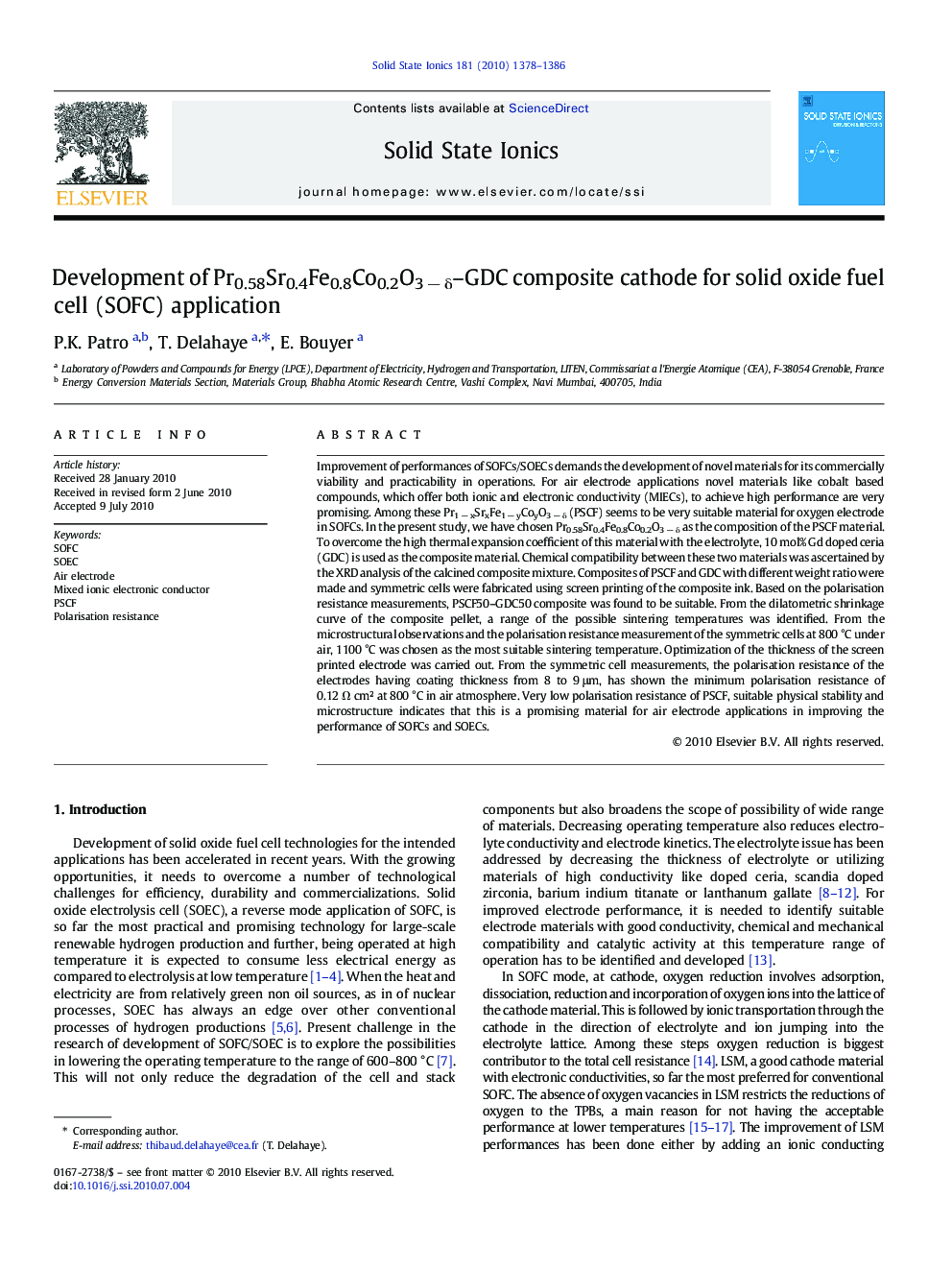| کد مقاله | کد نشریه | سال انتشار | مقاله انگلیسی | نسخه تمام متن |
|---|---|---|---|---|
| 1296659 | 1498340 | 2010 | 9 صفحه PDF | دانلود رایگان |

Improvement of performances of SOFCs/SOECs demands the development of novel materials for its commercially viability and practicability in operations. For air electrode applications novel materials like cobalt based compounds, which offer both ionic and electronic conductivity (MIECs), to achieve high performance are very promising. Among these Pr1 − xSrxFe1 − yCoyO3 − δ (PSCF) seems to be very suitable material for oxygen electrode in SOFCs. In the present study, we have chosen Pr0.58Sr0.4Fe0.8Co0.2O3 − δ as the composition of the PSCF material. To overcome the high thermal expansion coefficient of this material with the electrolyte, 10 mol% Gd doped ceria (GDC) is used as the composite material. Chemical compatibility between these two materials was ascertained by the XRD analysis of the calcined composite mixture. Composites of PSCF and GDC with different weight ratio were made and symmetric cells were fabricated using screen printing of the composite ink. Based on the polarisation resistance measurements, PSCF50–GDC50 composite was found to be suitable. From the dilatometric shrinkage curve of the composite pellet, a range of the possible sintering temperatures was identified. From the microstructural observations and the polarisation resistance measurement of the symmetric cells at 800 °C under air, 1100 °C was chosen as the most suitable sintering temperature. Optimization of the thickness of the screen printed electrode was carried out. From the symmetric cell measurements, the polarisation resistance of the electrodes having coating thickness from 8 to 9 μm, has shown the minimum polarisation resistance of 0.12 Ω cm² at 800 °C in air atmosphere. Very low polarisation resistance of PSCF, suitable physical stability and microstructure indicates that this is a promising material for air electrode applications in improving the performance of SOFCs and SOECs.
Journal: Solid State Ionics - Volume 181, Issues 29–30, 22 September 2010, Pages 1378–1386